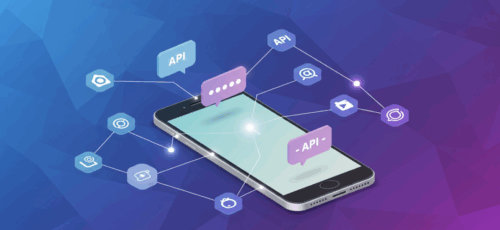While businesses rely on various technologies to connect with associates and clients, most still rely on a phone number to communicate. In a survey, Metrigy found that nearly 4 out of 10 customers prefer to call the company to speak with a representative. When your client or business leaves a traditional PSTN carrier for a Voice over Internet Protocol (VoIP) or Unified Communications as a Service (UCaaS) solution, they can port their old phone numbers to the new carrier or platform.
Porting a number can provide several advantages to a business. Cloud-based communications providers know that many companies will want to bring their old phone numbers to their new service, and they offer a simple number porting process to ensure the transition is as painless as possible. Considering the advantages that number porting can provide your client or business will help you determine if it’s worth looking for a communications partner that makes the process easy.
What Is Number Porting and How Does It Work?
When your client or business needs to change its voice and text communications provider, number porting can be a cost-effective and simple option to avoid acquiring a new phone number. New phone numbers can confuse callers and require all signage, advertisements, and business cards to be changed to reflect the new number. This can be costly.
Number porting involves three parties. The first party is the losing service provider (LSP) or the old carrier holding the phone number. The second party is the new carrier or platform. The third party is the National Portability Administration Center (NPAC), a part of the Federal Communications Commission (FCC) responsible for facilitating the porting of numbers.
The number porting process begins when you request a port from your new carrier. The new carrier validates your business or client’s information with the LSP to begin porting. The validation process can slow down your request if your information is incomplete or incorrect. After validation, the new carrier can request a port from NPAC to create a pending port. NPAC notifies the LSP, confirms the activation with the new carrier, and quickly finalizes the port. Finally, the new carrier will provide a window to port the number.
What Information Is Required to Port a Number?
Now that you understand the basics of number porting, you need to prepare for porting to avoid any delays or challenges. In most cases, a bill or statement from your company or client’s LSP dated within the last 30 days will suffice. It must contain the LSP name or logo and the numbers you wish to port. If the bill or statement does not have the necessary information, you will need one or more of the following:
- A customer service record (CSR) with the business phone number and address on file with the LSP (Not necessary for toll-free numbers)
- An email from the LSP listing the phone numbers you wish to port dated within the last 30 days
- A screenshot of the LSP’s service portal, including the numbers you wish to port, the LSP name or logo, and your account number
Without the correct information, your request may be rejected by the LSP or NPAC, resulting in delays.
What Numbers Can Be Ported?
Most phone numbers allow for porting after being validated by the LSP. The FCC has enforced Local Number Portability (LNP) since the Telecommunications Fairness Act was passed in 1996. The act changed how carriers distributed telephone numbers, removing AT&T’s total ownership and distribution rights and allowing users to port their numbers to a new carrier with few limitations.
Related: Speeding up the Porting Process
While porting is typically allowed, certain rural locations have local and state waivers to prevent number porting. It’s important to determine if the new carrier you choose provides coverage by checking its coverage map.
How Long Does It Take?
While most numbers can be ported, certain transitions will take longer. For instance, a business porting a wireline phone number to a mobile phone or VoIP may experience longer wait times. Simple ports can often be completed in two to four weeks, but ports of more than 50 numbers will take up to six weeks. Some carriers take several weeks to reply to the new carrier, and if the information you provide needs to be corrected, it can lead to longer wait times.
Why Do Businesses Choose to Port Their Numbers?
Number porting is critical to many organizations, making even a several-week wait worth the effort. Businesses tend to port their numbers to avoid the cost of revising and reprinting forms, signage, advertisements, and other paper and digital images of their phone number. Many companies have built years of trust with their clients and do not want to confuse callers with a new phone number.
Number porting can help a business keep its phone number in the following situations:
- Changing carriers
- Implementing Session Initiation Protocol (SIP) or VoIP
- Moving to a different state
For example, the owner of a local glass company with a 25-year reputation decides to switch from a traditional carrier to a VoIP solution. If the owner chooses not to port the phone numbers, they must order new vehicle decals, forms, business cards, and advertisements. They must also change their website and social media to reflect the new number. The business may lose valuable customers they have retained over the years who are unaware of the change and receive an out-of-service response when they call.
Related: Best Practices for Phone Number Porting
Advantages of Porting Numbers
When you partner with a platform that offers simple, in-house number porting as part of its onboarding process, you can ensure the organization can smoothly transition to the new carrier while benefiting from a few essential advantages.
Seamless Communication
Ensuring a business’s phone lines are always accessible to clients, vendors, and employees is vital. Changing phone numbers can lead to confusion and break the ease of communication between the company and its associates and clients. Operations can continue without interruption when you port your business or client’s phone numbers.
Time and Cost-Efficiency
As mentioned, companies invest considerably in featuring their phone number on advertisements, vehicles, signage, and paper or digital forms. You can save your client or business time and money when you port their numbers. They can keep all their signs, advertisements, and business cards without any changes.
Brand Recognition
Phone numbers, especially vanity numbers with patterns or phrases, promote brand recognition. If a company has been using a recognizable phone number for years, porting it will allow your client or company to maintain the recognition they have gained.
What to Look for in a Communications Platform That Offers Number Porting
Many companies are looking for cloud-based solutions to improve the scalability and flexibility of their communications—they expect to keep their number as they expand their communication capabilities. If your business or client wants to switch to a new carrier and recognizes the advantages of porting their phone number, find a partner that makes keeping the existing number as easy as possible.
In addition, the Business Research Company reports that market growth suggests organizations are switching to SIP solutions, with the global SIP market growing from $14.7 billion in 2022 to nearly $16.5 billion by 2023. If your client or company is switching to a SIP provider, look for the following qualities in its next communications platform.
Simple Processes
A communications partner with a simple porting process allows you to port your number during onboarding. You won’t need to contact the LSP or find the right form to initiate the process. The best platforms allow you to request a port from a simple web portal and only require a bill or statement from your LSP with critical information like the phone numbers you want to port and the carrier name or logo.
Quick Porting Capabilities
After you initiate the port, an excellent partner will ensure the LSP responds to your request promptly. While some porting requests can take time, a good customer service team will minimize your wait time and stress by maintaining communication with the old carrier and providing updates on the status of the phone number. A responsive team can significantly reduce wait times if the request is rejected or requires more information.
While your client or business’ transfer is processed, an exceptional communications platform will allow you to use a local routing number (LRN). The new provider will route your calls through the public switched telephone network (PSTN), so callers will continue to reach the business’ phone line when they use the old phone number.
Get Started with a Seamless Number Porting Process
Flowroute™ makes it easy to port business phone numbers. Your client or company’s phone lines will be up and running in minutes with an LRN when you initiate the porting process during onboarding. To see how we can make your transition seamless, get started with Flowroute™ today.






